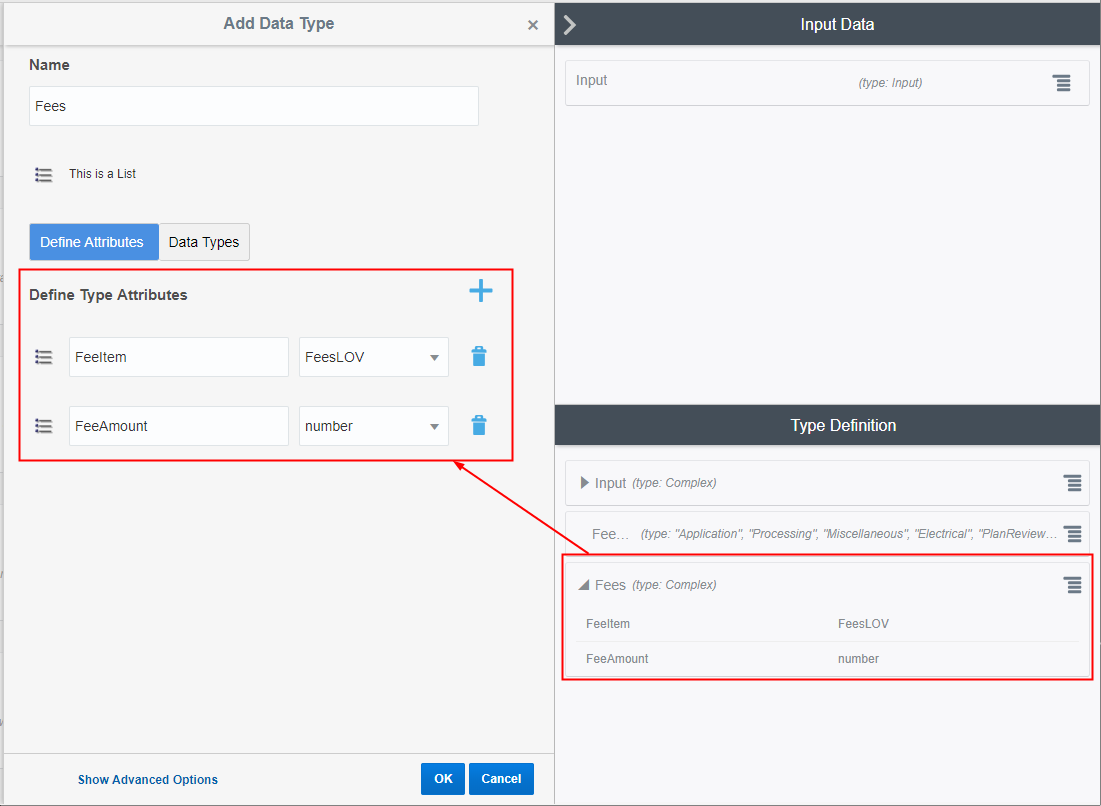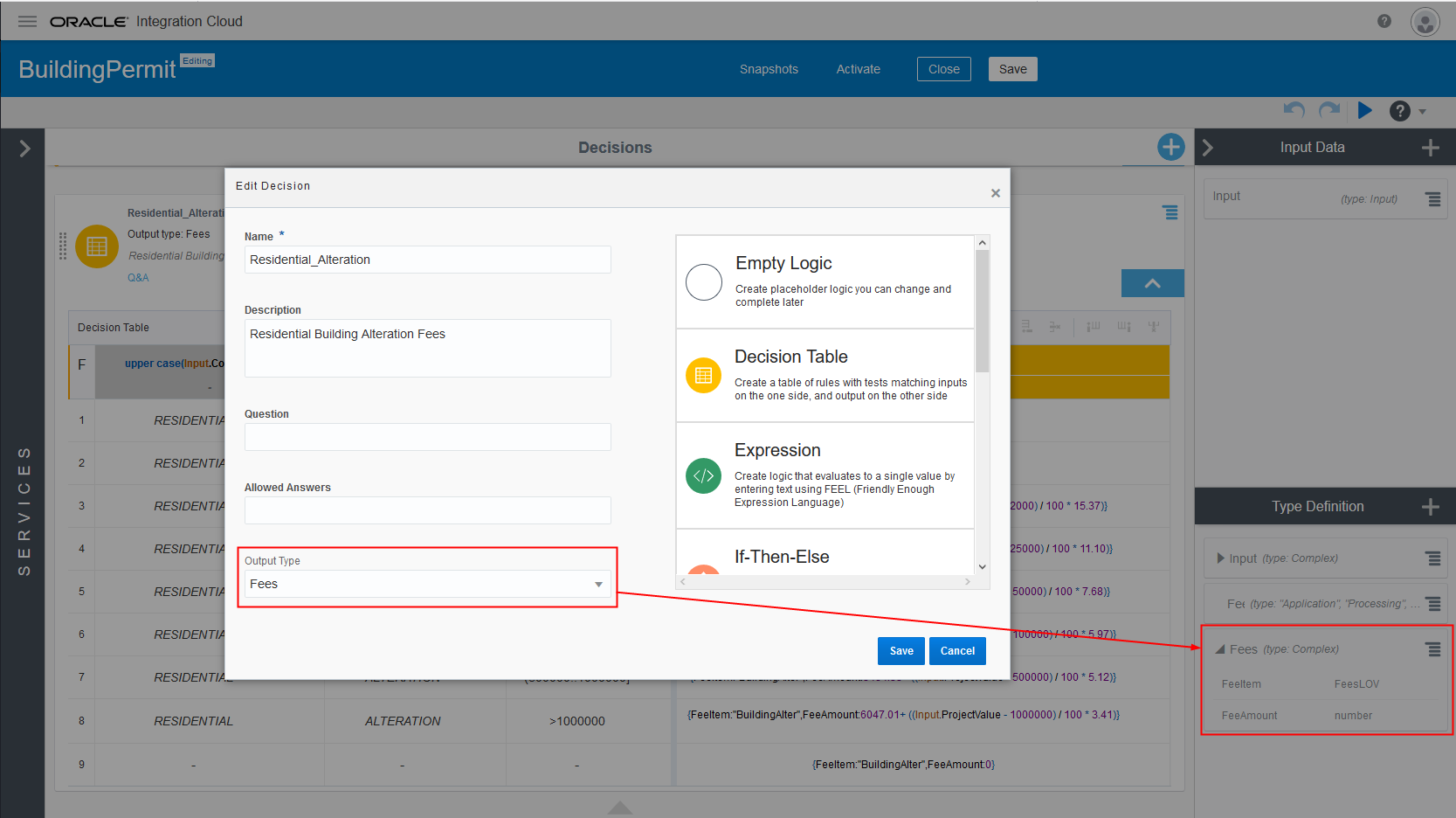2Configuring Fee Decision Models
Creating Decision Models for Fees
This topic describes the requirement of creating a decision model after creating fee items and before creating a fee schedule. You use Oracle Autonomous Integration Cloud to create decision models.
Prerequisites
Before you create a decision model, you need to create any required fee items that will be associated with the decision model.
For more information on fee items, see Setting Up Fee Items.
Decision Model Overview
You create decision models using the Oracle Autonomous Integration Cloud (OIC) decision modeling feature. Use this feature to create decision models to automate the decision logic in your business processes. As part of creating a decision model, add and order decisions, define decision inputs, and model the logic. The decision model editor supports the Decision Modeling and Notation (DMN) standard for you to create your models.
For more information on decision models refer to your Oracle Autonomous Integration Cloud documentation, Create Decisions.
In the Public Sector Compliance and Regulation services, a decision model enables you to automate the calculation of fees based on your business process criteria.
For example, assume your agency applies varying fees based on the total cost of a building project for which a permit is being requested. A decision model enables you to automate this business logic:
If the project value is less than or equal to $500, then the application fee is $50.
If the project value is more than $500 but less than or equal to $1,000, then the application fee is $75.
If the project value is more than $1,000 and $5,000, then the application fee is $125.
For any project value over $5,000, then the application fee is $200.
Before you create a decision model, you must first create a fee item. After creating the decision models, you can then associate the decision model with a fee schedule. The fees workflow generally follows these main steps and events:
Create fee item(s).
Create decision model based on existing fee item(s).
Create a fee schedule incorporating fee items and decision model.
Associate a fee schedule with a transaction type.
Map intake form fields to decision model in the Intake Form Designer.
When an end user is submitting an intake form the system applies fees and fee logic based on input.
Configuring Decision Models
You can set up inputs and decisions any way you like following the guidelines provided in the documentation for OIC. However, the configuration here for output data types is required for setting up the fee schedule.
To configure decision models:
Create a fees list of values (LOV) with the fee item names.
Currently, there is no direct integration of configuration data, such as fee items, between OIC and Oracle Public Sector Compliance and Regulation. Although creating an LOV is optional, any fee item names added to a decision model output need to be entered exactly as they appear in Oracle Public Sector Compliance and Regulation. When you use the LOV and enter values in a decision output. OIC validates the entry and displays a warning if your entry does not match an item in the LOV.
This example illustrates the list of values setup in OIC used to validate fee items entered in the Decision Table. Select list of values in the Constraint options when you’re adding the data type definition.

(Required) Set up the complex data type output to include these attributes: FeeItem and FeeAmount.
The FeeItem attribute should use the fees LOV that you created. The FeeAmount attribute uses numbers that you enter on the decision model.
Note: This step is important because the FeeItem and FeeAmount attributes are used to map the fee items on the fee schedule to the decision model.This example illustrates the complex data type output that you set up in OIC for your decision model. You must define FeeItem and FeeAmount attributes.

(Required) Add the output data type name to every decision and use allowed values in the Decision Table grid.
To edit a decision, click the decision menu button and select Edit.
Select the defined output type from the Output Type list.
This example illustrates the output data type name Fees added to the Residential_Alteration decision. The output type provides constraints on which values are allowed in the decision model.

This is an example of the final decision values based on the output type.
The decision output type in the Residential_Alteration decision is Fees. The validation ran on the Fees values entered in the Decision Table, and no errors were returned.

(Required) You must also configure the services in the Services panel to the left of the decisions, and activate the model. For more details, see the documentation for OIC, Creating a Service.
When the Oracle Public Sector Compliance and Regulation service submits a request to the OIC, after running the request against the decision model, the application returns the fee item name and the fee item amount.